What to expect after adopting a code review tool like Codacy

In a previous article, we’ve covered how much technical debt and code quality issues are costing you and how Codacy can help you reduce that cost. Now, let’s see what changes in your data when you use an automated code review tool like Codacy.
The data below belongs to 5 repositories with a team of 120 developers behind, collaborating on a daily basis. We analyzed these 5 repositories for 90 days. Here’s what we found out.
Please note this analysis was part of an experiment we did, and this is not the type of chart you’ll see in Codacy.
Total of PRs blocked automatically
In the 5 repos we analyzed, we managed to stop 468 PRs from merging because they didn’t meet the organization’s code quality standards. This is crucial to prevent new issues from entering the code base and decrease technical debt.
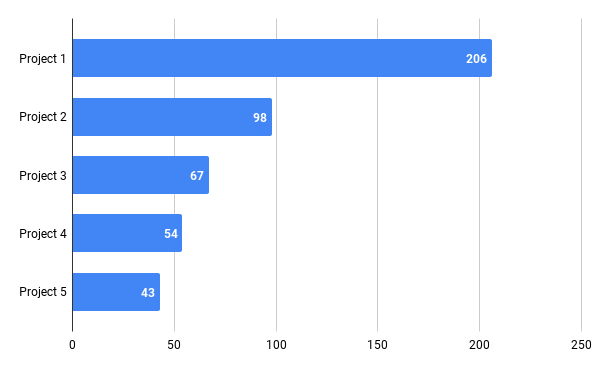
And also, by blocking these 468 PRs automatically, we saved the team a significant amount of time, as they no longer need to look for these issues manually. Instead, they can spend their time focusing on more complex issues that Codacy cannot pick up. Plus, with the code quality reports provided, each developer quickly understood the existing issues and how to fix them.
Evolution of PRs blocked automatically
Over time, we observe that automated code reviews provide value to this organization since we see a drop in blocked PRs. In short, this means each developer behind the PR learns from the reports provided, and they’re not repeating the same mistakes repeatedly. They can easily spot which lines of code contain issues or security breaks and fix them on demand.
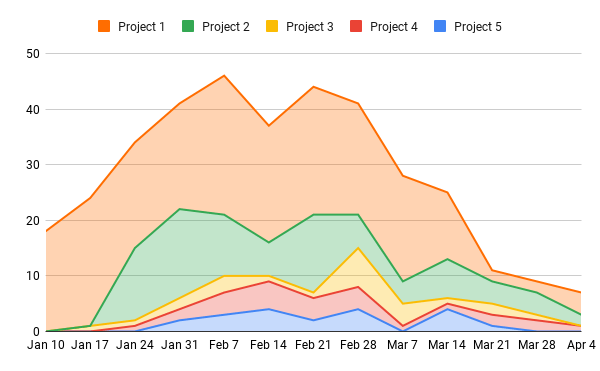
In the long run, by decreasing technical debt, we make sure that engineers use most of their time to build new features instead of fixing and maintaining bad quality code.
Issues management
Total of issues fixed, by issue category
In the same 5 repos, 34 883 issues have been fixed and removed from the repos in different issues categories.
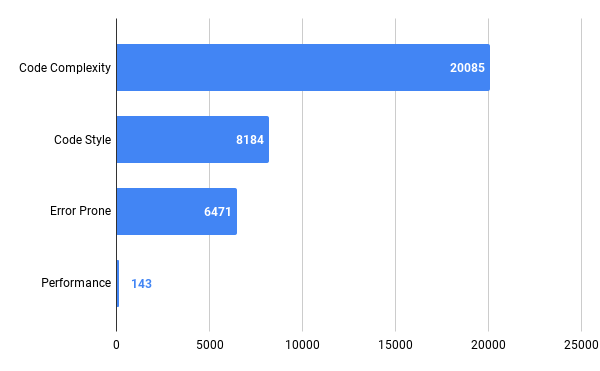
Our reports also showed that a significant amount of the issues that the team is fixing are related to code complexity. This means that, over time, the code on these repositories has become more maintainable. Guaranteeing code maintainability is important because it allows you to, for example:
- Make changes in the code quickly, without introducing problems with the change;
- Add new features efficiently;
- Improve the overall performance of your code;
- Onboard new developers quickly.
Total of issues found and fixed
In the 5 repos we’ve analyzed, many new code lines likely entered the code base; hence the spike in issues found and fixed in the following chart.
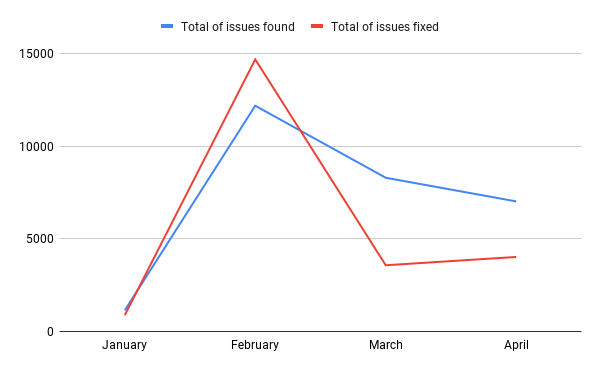
This is positive since the issues flagged are being fixed and removed from the repos. This impacts positively the technical debt over time.
Deployment frequency per active developers
The deployment frequency of all active developers in the 5 repos we analyzed is steadily increasing. This also indicates that using automated code review tools increases engineering productivity.
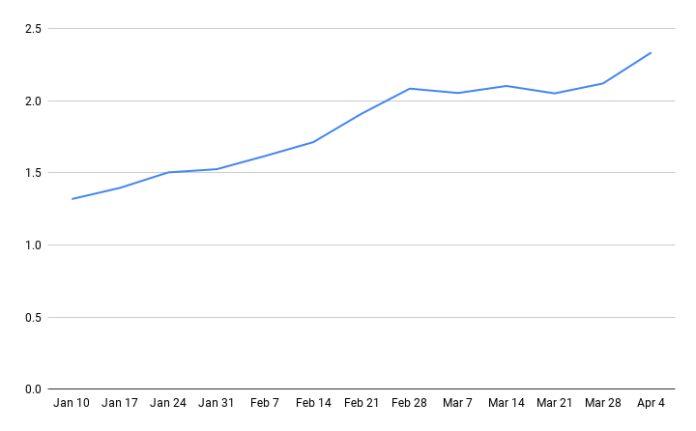
Conclusion
It’s hard to tell if your organization will behave similarly to the team behind these 5 repos. There’s a chance your team behaves differently if you have not fully integrated the use of an automated code review tool into your engineering workflow.
However, when you integrate Codacy into your engineering by establishing code quality standards at the org level and onboarding your team, we usually see the same pattern described in this article. With time, fewer PRs will be blocked as Codacy flags issues and shares learnings with your engineers. The team can fix issues independently, increasing deployment activity.
.svg)


